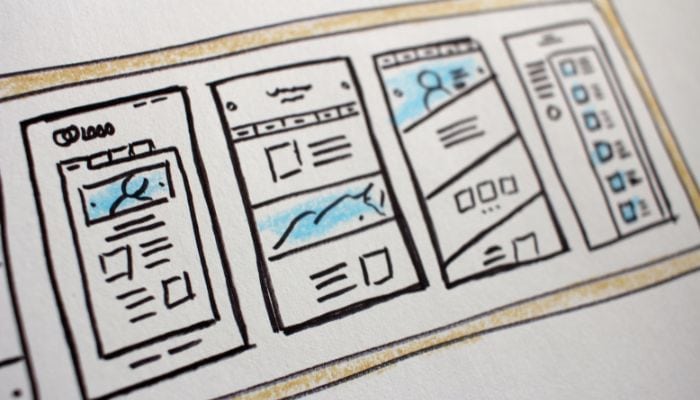Personalizing your own web space has been around for as long as the internet has been. Think of how much time you have spent curating the perfect playlist for your MySpace page, picking the perfect Facebook profile picture, or even coming up with a clever AOL away message. With the internet being infinitely vast, we just want to feel like we have our own little place in it.
When creating a website for your business, you might view it the same way as your own personal sites and social media accounts; but there’s much more to it. If you want your website to take off, it won’t be just about you anymore. You’ll have to think about your site users as well! In this blog, we will talk about the power of personalization and how you can enhance user experience on your website.
Understanding User Experience
User Experience (commonly referred to as UX) encompasses the overall experience a person has when interacting with a product or service, especially in the context of digital platforms like websites. It goes beyond just aesthetics and functionality and includes factors such as ease of use, efficiency, accessibility, and emotional satisfaction. A great user experience is crucial for businesses as it directly impacts customer satisfaction, engagement; and ultimately, the success of the website or product.
Imagine you go into Target in a different town to pick up a few things (and throw a couple of goodies in the cart while you’re at it). You have never been to this Target before, but you have been to other Targets, so you know what to expect. However, you step into this particular Target only to find that there are no more aisles. Not only that, the merchandise is completely unorganized. You go to where you expect the food section to be, and there are toys in the fridge. You go to the usual location of the electronics department, and there are nothing but shoes. The UX of the store is totally off. There is no organization or intuitive understanding of the store. The UX design elements of your website are the aisles and sections that help your user find exactly what they are looking for, even if they have never been to your site before.
There are a handful of factors that impact UX on a website. Some common examples include:
- Website usability: This focuses on how easily visitors can navigate, find information, and complete tasks. Intuitive navigation, clear labeling, and responsive design are key elements that enhance usability.
- Visual design: This includes elements like layout, color scheme, typography, and imagery. A visually appealing website that aligns with the brand identity can create a positive impression and engage users.
- Performance and loading speed: Slow-loading pages or technical glitches can frustrate visitors and lead to abandonment. Therefore, optimizing website performance is essential for providing a smooth and efficient user experience.
- Content quality and relevance: Well-written, informative, and engaging content helps users find the information they seek and keeps them engaged with the website. Additionally, the use of multimedia elements such as images, videos, and interactive features can enhance the overall user experience.

Benefits of Personalization on Websites
Personalization is a UX design element that refers to delivering tailored content, recommendations, and experiences so you can cater to the specific needs and interests of individual users. Why spend the time personalizing your site for each user? Here are some of the benefits of personalization on websites:
- Increase user engagement and satisfaction: When visitors feel that a website understands their preferences and provides relevant information or products; they are more likely to stay longer, explore further, and engage with the site’s offerings.
- Improve conversion rates and drive sales: When websites deliver personalized product recommendations or offers based on users’ browsing history, purchase behavior, or demographics, it increases the likelihood of users finding items they are interested in and makes it more convenient for users to buy your products.
- Foster customer loyalty and retention: When users feel valued and understood by a website, they are more likely to develop a sense of loyalty toward the brand or business. Personalized experiences create a deeper emotional connection and build trust, making customers more likely to return for future interactions. It makes them feel like you are thinking about them in particular, which feeds the human desire for connection.
- Provide a consistent experience: Personalization keeps everything the same across various touchpoints, like personalized email campaigns or customized user interfaces. This consistency reinforces the brand identity and strengthens the relationship with users, further building loyalty and encouraging repeat visits.

Techniques for Personalizing User Experience
Ok, so now we know what personalization is and why you should incorporate it into your website, let’s get into how to actually implement it.
- Gather user data through cookies, forms, and tracking: Websites can collect user data through various means such as cookies, registration forms, or user accounts. Cookies allow websites to store information about users’ preferences, browsing behavior, and interactions to gain valuable insights into what their users are looking for.
- Utilize analytics tools to understand user behavior: Analytics tools provide in-depth insights into user behavior on websites. By analyzing metrics like page views, click-through rates, or time spent on specific pages; websites can identify patterns and understand user preferences. This data-driven approach helps curate user experiences based on real-time behavior.
- Tailor content based on user preferences and demographics: You can personalize content by considering users’ preferences, demographics, or past interactions. By leveraging this information, you can deliver targeted content that is relevant and resonates with individual users. This may include personalized product recommendations, customized newsletters, or dynamically generated content based on user interests.
- Implement dynamic and adaptive content strategies: Dynamic content strategies involve presenting different content based on specific user attributes or behavior. For example, websites can display different offers or promotions based on a user’s location or browsing history. On the other hand, adaptive content strategies involve modifying content in real-time based on user interactions which ensures that the most relevant information is presented to users as they navigate the website.
- Utilize algorithms to offer personalized product recommendations: Websites can use recommendation algorithms that analyze user behavior, purchase history, and similar user profiles to generate personalized recommendations. By offering relevant and personalized suggestions, websites can help users discover new products or find items that align with their interests.
- Provide relevant content suggestions based on user interests: By analyzing user interactions and preferences, websites can deliver articles, blog posts, or other relevant content that matches users’ specific areas of interest. This keeps users engaged and encourages them to explore your site further.
- Adaptive website design and layout based on user preferences: Websites can personalize the user interface by allowing users to customize certain aspects of the design like preferred color schemes, font sizes, or layout configurations. By giving users control over their interface preferences, websites can enhance the user experience and create a more personalized environment.
- Implement responsive design for different devices: You already know what a pain it is to try to navigate a site on your phone that is formatted for a computer. Responsive design ensures that websites adapt and display properly across different screen sizes and devices.

Challenges and Considerations in Personalization
Personalization has a lot of benefits and there are many ways to go about it, but no matter how you personalize your website, you need to keep these considerations in mind:
- Privacy Concerns and Data Security: Personalization involves collecting and utilizing user data, which raises privacy concerns. Websites must comply with relevant privacy regulations, such as the General Data Protection Regulation (GDPR) or the California Consumer Privacy Act (CCPA). It is essential to inform users about data collection practices, obtain their consent when required, and handle personal information securely and responsibly. Additionally, with the increasing importance of data security, websites must prioritize protecting user data from breaches and misuse. Implementing robust security measures, such as encryption, access controls, and regular security audits is crucial to maintain user trust. Follow best practices for data handling, storage, and disposal to ensure that user data is kept confidential and secure.
- Balancing Personalization with User Control: While personalization can enhance user experiences, websites should provide clear opt-in and opt-out options for personalized features or content. Allowing users to choose whether they want to receive personalized recommendations or customize their settings helps strike a balance between personalization and user control. Websites can also offer settings that enable users to specify their preferences, such as preferred categories, frequency of recommendations, or level of customization to allow users to fine-tune their personalization settings.
- Avoiding Over-Personalization and Intrusiveness: Be mindful of not overwhelming users with excessive personalization, as it can feel invasive or intrusive. Striking the right balance requires understanding user preferences, respecting their boundaries, and avoiding tactics that may be perceived as intrusive or manipulative. Personalized elements, such as recommendations or targeted content, should blend naturally within the website’s design and flow. The user should feel that the personalization is a helpful and integrated part of their experience, rather than an intrusive interruption.
In conclusion, personalization is a great way to connect with your customers through your website while making them feel connected to you too. By tailoring content, recommendations, and user interfaces based on individual preferences and behavior; you can increase user engagement, satisfaction, and conversion rates. This will ultimately lead to improved customer loyalty and retention.
Does all of this still feel overwhelming? No need to worry! AlchemyThree has got your back. We are the experts in website design so you don’t have to be. If you want to find out how we can help maximize your website, schedule a call with us!




